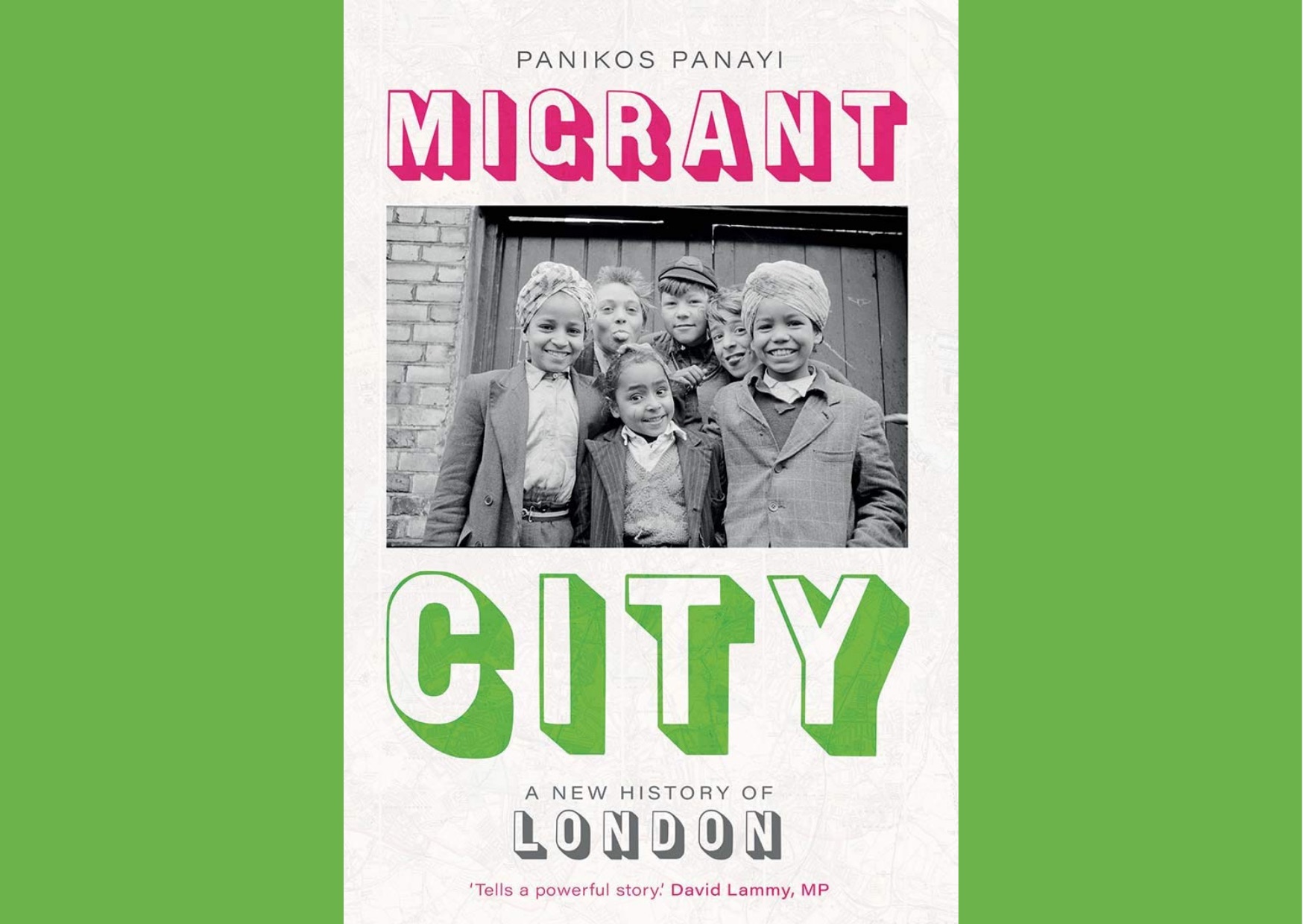Post
BOOK REVIEW | “Migrant City A New History of London” by Panikos Panayi
17 Dec 2021
Migrant City: A New History of London
Panikos Panayi
Last year Professor Panikos Panayi discussed his new book 'Migrant City' in a presentation for The London Society. Here Barry Coidan reviews the book.
Professor Panayi’s book is one that educates, diverts, and entertains in equal measure. The horror of anti Semitism, violence and racism inflicted on the migrants in the East End, Notting Hill and elsewhere in London is leavened by the accounts of the hard work, ingenuity and joy of community and family.
But it is London itself that is the star – its longevity, as a financial, commercial, and earlier maritime hub of an Empire and the world – attracting the dispossessed, the persecuted and the go-getter.
Emigrants have been part of the London story for over two thousand years. The Romans brought black, brown, and white slaves with them. As the city developed, as trade and commerce expanded, peoples from Europe and farther afield set up home and businesses in the city. London’s role in the transatlantic slave trade meant that in the 18th century some 1-3% of the city’s population was black.
Professor Panayi introduces us, through eyewitness accounts, diary entries, the observations of various social commentators, to the experiences of the émigré be they Jewish, German, French, Huguenot, Irish, Italian, Cypriot, Turkish, Russian, Chinese, African, Afro-Caribbean, Bengali, Bangladeshi or Indian (I am sure I have missed out a few).
We learn how migrants moved into specific areas of London. Sikhs to Southall, Cypriots to the Finsbury Park/Green Lanes area, Jews to the East End, followed by Bangladeshi. These communities enabled migrant run businesses to flourish with the help of family and overseas connections. We are told how migrants were exploited – doing the work the indigenous whites did not want to do. And while many stayed at the bottom of the heap both financially and socially – others through hard work, brains or sheer good luck were able to move into higher social echelons and into the wealthy middle-class suburbs and the centre of the cultural, financial, commercial, professional, and political life of London.
Then there are those migrants whose presence in London had significant impact on future events in Europe, Russia, China, India, and Africa. Most of us know that Karl Marx lived for many years in London, Lenin also spent time here as did Trotsky and Stalin. Gandhi studied here in the 1890’s and pressed the case for South African “coloured” (as they were then known) in London at the beginning of the 20th century. Earlier the fermenters of Italian unification were in London; Afro-American, Afro-Caribbean, Africans studied in London, set up pressure groups. The Irish struggle for independence – increasingly violent – was in part acted out on the streets of London right up to the 1990’s.
The large sweep of the professor’s book makes it impossible to do it justice in this brief review. One group, however, features throughout – the Jewish migrant. In many ways their experience exemplifies that of other migrants. Barely tolerated, then expelled from these Islands in the late 14th century, readmitted in the 17th century. Street hawkers buying and selling used cloths, living in the ghetto East End. Over time some of their descendants would become great financiers and retailers (Rothschilds, Tesco, Marks & Spencer). Embedded within all strands of society and the professions. Experiencing hatred and violence between the wars and later. Moving from slum to Hampstead, Highgate and Edgware and absorbed within London multicultural mix.
This book celebrates London, its uniqueness, and its influence. It also acknowledges the drive, struggle and fortitude of the myriad migrants who call London their home. They and London have made a dynamic accommodation delivering a vibrant, if at times, fractious multicultural mega city.
WATCH: hear Professor Panayi talk about his book in this London Society presentation from last year.
